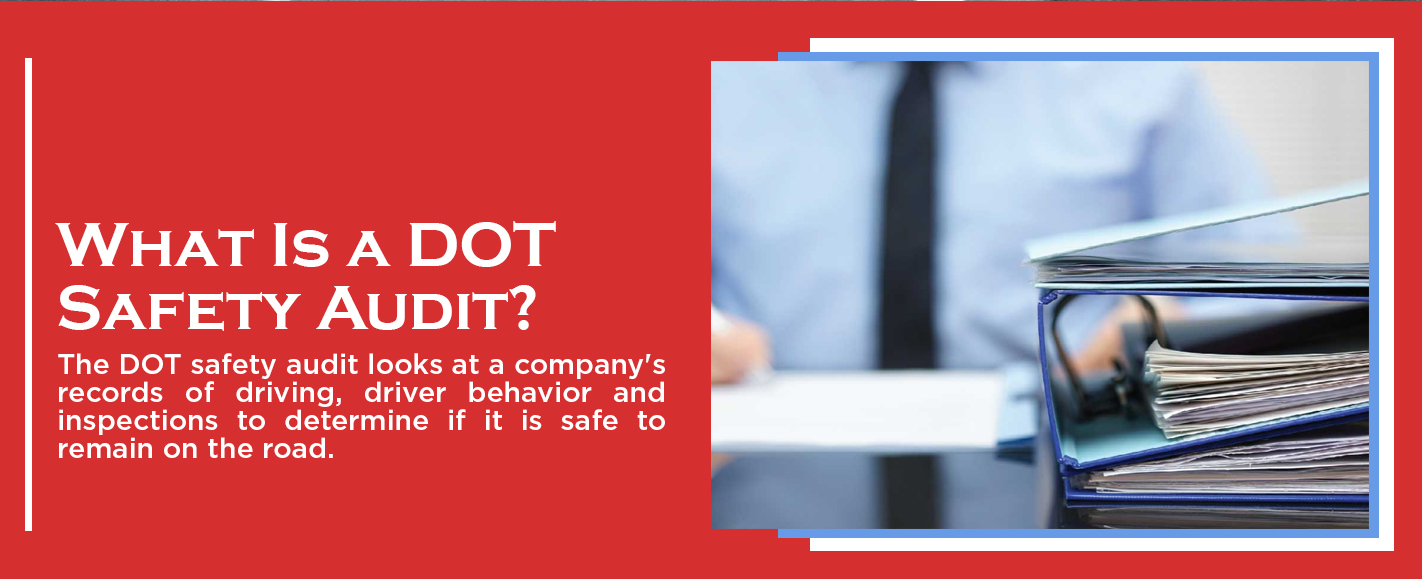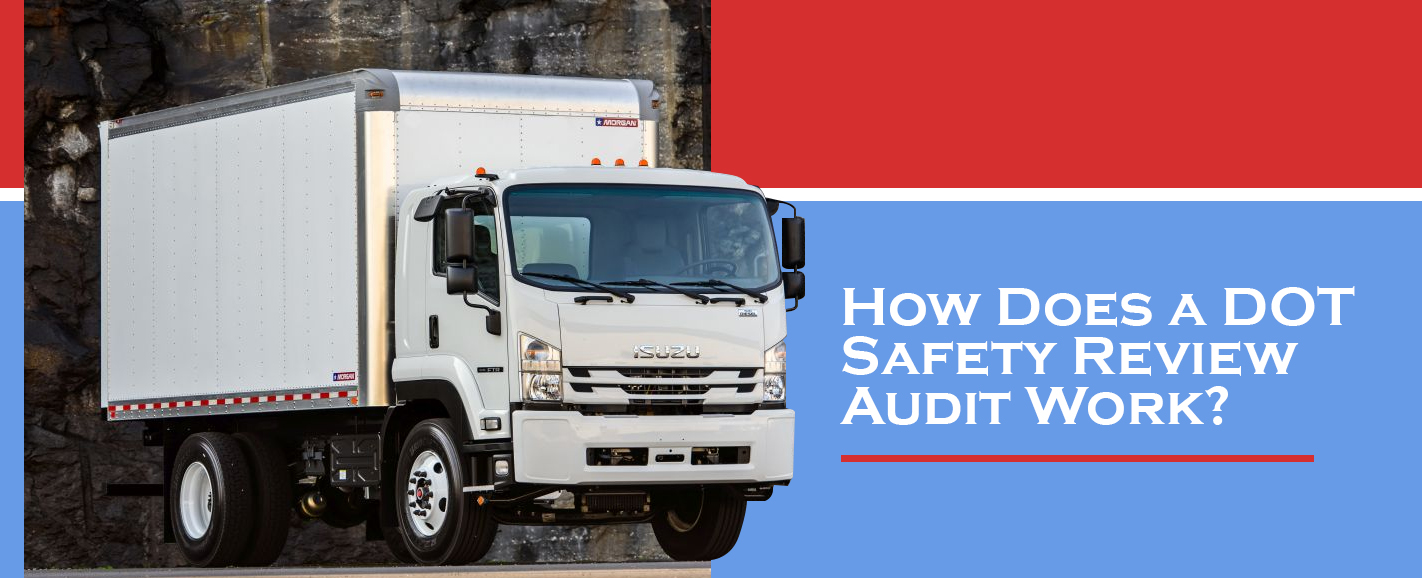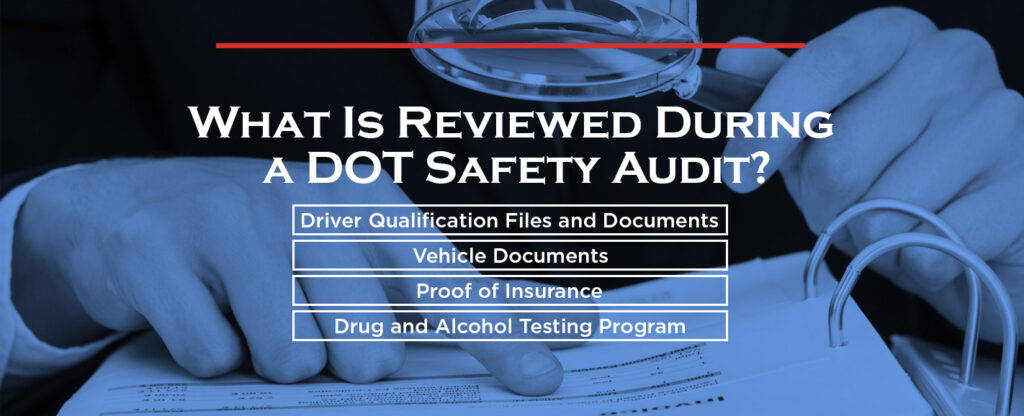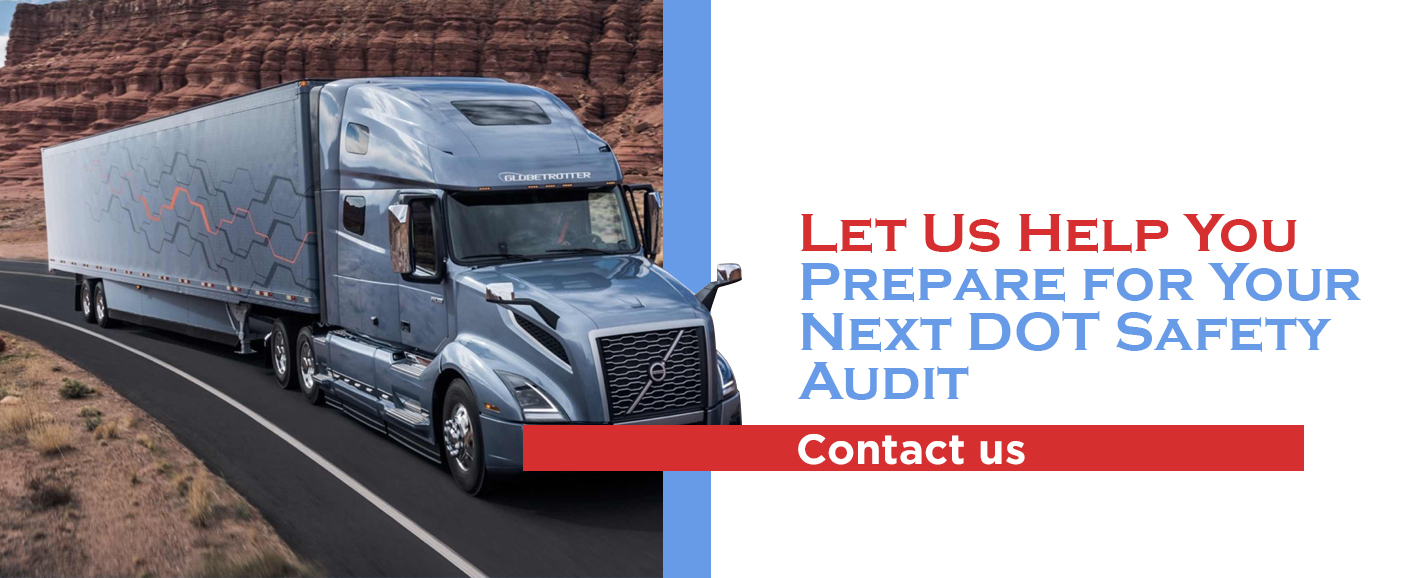Guide to Safety Review Audits for Trucking Companies
The safety review audit is an important part of the trucking industry for several reasons, and it is nothing to fear. Being prepared, though, will ensure you make it through the examination with little trouble. Part of the preparation you need will be an understanding of about how the audit is conducted, what is required and how to prepare for it beyond educating yourself on the process.
You cannot opt out of a required audit. The Department of Transportation — DOT — and the Federal Motor Carrier Safety Administration — FMCSA — hold trucking companies responsible for specific safety standards. Reviews check that you are keeping your fleet in compliance with these requirements.
Are you ready for your next safety review audit? Be sure to have someone on your side who can walk you through what to anticipate. With professional help before the audit, you can survive this common occurrence in the trucking industry.
What Is a DOT Safety Audit?

The DOT safety audit looks at a company’s records of driving, driver behavior and inspections to determine if it is safe to remain on the road. There are three instances when you will need to have a safety audit conducted:
- New Entrant Audit: A new entrant review must occur within the first 12 months of a company’s operation. This audit happens with all new companies before they are allowed to conduct trucking business for the long term.
- Targeted Audits: Sometimes, the DOT will target a company due to an elevated compliance, safety and accountability — CSA — score. Scores rise with failed audits or a lack of adherence to driving regulations. Companies that get targeted audit will have multiple warnings before the actual audit happens.
- Compliance Audits: Compliance audits may occur randomly or in response to reports about a company. You will always get phone notice before your company undergoes a compliance review.
Though the DOT has many reasons for conducting safety audits, and while the exact documents and records the auditor will want to look over may vary, the general procedure is the same. No matter what, it’s important to have all your paperwork ready and organized for the audit.
Safety Audit vs. New Entrant Audit
The purpose of all audits is to ensure companies are doing what they need to maintain the safety of their drivers, loads and others on the roads. The results depend on the type of assessment made. Here’s a look at the differences between a new entrant and safety audit.
New Entrant Audit
For a new entrant audit, there are two outcomes: pass or fail. You will know which your company received within 45 days of the review. Some factors will result in an automatic fail rating, but this will not automatically close a business. You will have a chance to take corrective actions:
- Pass: A pass rating indicates your company adheres to the requirements outlined by the FMCSA. You will receive registration with the FMCSA and continue to be subject to audits randomly or as part of a targeted review for the future.
- Fail: A failing score on the audit means you must file a corrective action plan. The plan will outline how you will remedy the problem that caused the failure. If you do not submit the proposal or fail to follow through on it, you could lose your registration with the FMCSA.
Safety Audits
Safety audits have three outcomes — satisfactory, conditional and unsatisfactory. Like new entrant audits, safety audits that result in unsatisfactory do not mean the end of the business. After a safety audit, you will get results within 30 days. Here’s what those results indicate:
- Satisfactory: With a satisfactory safety rating, your company has shown that you are doing everything to maintain safety standards and have an excellent safety record, too.
- Conditional: With conditional safety ratings, your company has not had problems, yet. But you failed to adhere to all the requirements of the FMCSA, which could lead to a safety issue in the future.
- Unsatisfactory: With unsatisfactory ratings, safety problems have already appeared on your company’s record, and you lack complete adherence to the required standards. After you’ve received this rating, you’ll have between 45 and 60 days to bring up the score, depending on what you carry.
How Does a DOT Safety Review Audit Work?

During a DOT safety audit, you may have the auditor come to your business, meet you at an agreed upon site or request you send in the paperwork electronically. In all instances, you will need to provide the required documents and records when requested or risk dropping your rating.
Before the audit, collect all the paperwork you need to prove that your business adheres to FMCSA standards and has safety management controls in place. You must demonstrate that you uphold these standards through paperwork for your drivers, vehicles and company.
How is a DOT Safety Rating Calculated?
The safety rating comes from the sum of several factors:
- Safety Management Controls: How clear your safety management controls are compared to similar companies will play a role in your rating. Indications of lax controls include incidents, violations and accidents.
- Regulatory Violations: The number of violations of regulations and their seriousness constitutes critical parts of your audit.
- Driver/Vehicle Issues: Out-of-service drivers and vehicle violations also count against your overall score. The auditor will take into account the number and frequency of these incidents.
- Roadside Inspection Violations: How often your drivers or vehicles get cited at roadside inspections and the severity of those citations are also considered during the audit.
- Vehicle Accidents: Hazardous material incidents or vehicle accidents factor into the overall audit. The auditor examines how many accidents have occurred per million miles driven and the trend of those numbers over time.
- State Regulation Violations: Like other violations, the number and severity of violations that are compatible with both state regulations and federal laws and rules also apply toward your rating.
- Trends: How many violations you’ve had over the years and whether they are increasing or decreasing also affects your overall mark.
These factors will determine if your company receives a satisfactory, conditional or unsatisfactory rating. Once the auditor completes the assessment, you get to sit down with them to discuss the results and talk about ways to improve the areas in which your business did not meet regulations.
If your business is undergoing an audit as a new entrant, because new companies may not have the required log of miles on the road, the company policies for safety play an even more critical role. For new entrants, several things can cause an automatic failure rating on the safety audit:
- Not Regulating Substance Use: If your company does not have drug testing, random drug tests or drivers who have operated their vehicles under the influence of drugs or alcohol, you will fail the audit.
- Using Unqualified Drivers: You will fail if any of your drivers do not have a commercial driver’s license, are medical unqualified or been disqualified from driving.
- Failing to Maintain Operator Records: Lacking proper insurance on the vehicle or using a driver who does not maintain log books will fail your review.
- Driving With Inspection Violations: Vehicles that fail safety inspections and do not get repaired will fail your new entrant review. Operating out of service vehicles or failing to fix them can also immediately result in a failing grade.
Don’t worry if you’ve gotten a failing rating as a new entrant. You will have to make a plan to fix the problem and have a new audit. Without completing the second audit to successfully gain your business’s FMCSA registration, you cannot operate your fleet.
What Is Reviewed During a DOT Safety Audit?
- Driver Qualification Files & Documents
- Vehicle Documents
- Proof of Insurance
- Drug & Alcohol Testing Program
- Accident Register

When you get notification of your safety audit, gather the required materials to prove your company has safety standards in place and follows through on them. You need records and documents about your drivers’ qualifications, the safety of your vehicles, insurance and proof of your substance testing program.
Learn more about each of these requirements below:
1. Driver Qualification Files and Documents
Drivers must maintain log books of how many hours they’re on the road, how long they sleep, how often they take breaks and how long the rests last. You may use either electronic or paper logs, but the information must be maintained for every driver. Included in the qualification files are these logs as well as proof the driver is medically cleared to drive and free of substance abuse. We have a checklist to keep all these files organized for each driver in your fleet:
- Driver Employment Application: The information on the employment application will make it easier to verify the person is the same as who is listed in other documents.
- Previous Employer Contact: If you have a new driver, you need to check with who they worked for over the last three years to verify they have remained free of drug or alcohol use. Clear substance use test results from former employers help to establish that your driver is safe behind the wheel.
- State Agency Inquiries: Inquiries to state agencies of the locations the driver worked and lived in check for criminal history and driving history.
- Medical Examiner’s Certification: The driver must have a medical examination certificate in the truck at all times. A copy of this also goes into the driver qualification files.
- Road Test: The driver’s road test verifies the driver has passed the exam showing they have the skills needed to drive a commercial vehicle.
- Road Test Certification: Certification of passing the road test also needs to be in the file.
- Driver’s Certificate of Violations: You must include information about how many violations each driver had over the last year.
- Driver’s Road Review: Aside from the violations review, you should also show a record of the last year of driving for each operator.
You may be required to have additional records or files in your driver qualifications folder. Contact us for help if you’re not sure of what to include.
2. Vehicle Documents
Vehicle documents include records of inspections for the vehicle as well as any repairs needed to resolve a violation. Vehicles must also undergo a daily post-trip inspection by the driver as well as periodic inspections. Keep records of these with other inspection documents and any certification of repairs done.
3. Proof of Insurance
All vehicles in your fleet must carry appropriate insurance. The type of insurance and the minimum level of coverage depends on what your company carries and where you drive. For instance, if you transport 16 or more passengers, you must have at least $5,000,000 of coverage. But if you are a for-hire company that carries nonhazardous materials, your minimum coverage is $750,000.
4. Drug and Alcohol Testing Program
You are required to have a drug and alcohol testing program that randomly checks your workers for substance use. Additionally, all drivers must take a drug test before they can drive. Requirements for drivers and substance testing by the company are outlined in the FMCSA’s regulations part 382, Controlled Substances and Alcohol Use and Testing.
5. Accident Register
You must include an accident register and copies of any accident reports that accompany the incidents. After an accident, the company must keep records of the accident for at least three years. These reports must include several things:
- Driver name
- Date of the incident
- Number of fatalities
- Injury number
- City and state where the event occurred
- If hazardous materials were released in the accident
How to Prepare for a DOT Safety Audit
You’re not on your own for DOT safety audits. These reviews are how the government keeps those on the road safe, including your drivers. While gathering the materials you need can be daunting, you can turn to an expert for help.
To ensure you’re ready, get the records required to prove your company has the FMCSA mandates in place. Show that you put forth the effort to keeping your drivers ready for safe driving. You also need to show that you quickly correct any problems with your fleet, should a violation during an inspection arise. If you have the paperwork to back up these tasks, you should be fine at the safety audit.

Let Us Help You Prepare for Your Next DOT Safety Audit
For your next trucking safety audit, contact us at US Compliance Services to help you sort through what you do and don’t need. Getting help makes it easier for you to get everything ready for the audit, so you don’t fall short and fail. We assist with this process in addition to several other resources, such as a driver qualification template to ensure you have everything you need to prove driver safety and fitness.
While we cannot ever guarantee the results of an audit, we can make sure you have all the necessary documentation the DOT will require. Keeping up with the necessary paperwork can be difficult. That’s why we’re here to help you keep your business on the road when you must undergo a safety audit. Contact us at US Compliance Services to ensure you’re always ready for the inevitable safety audits.
